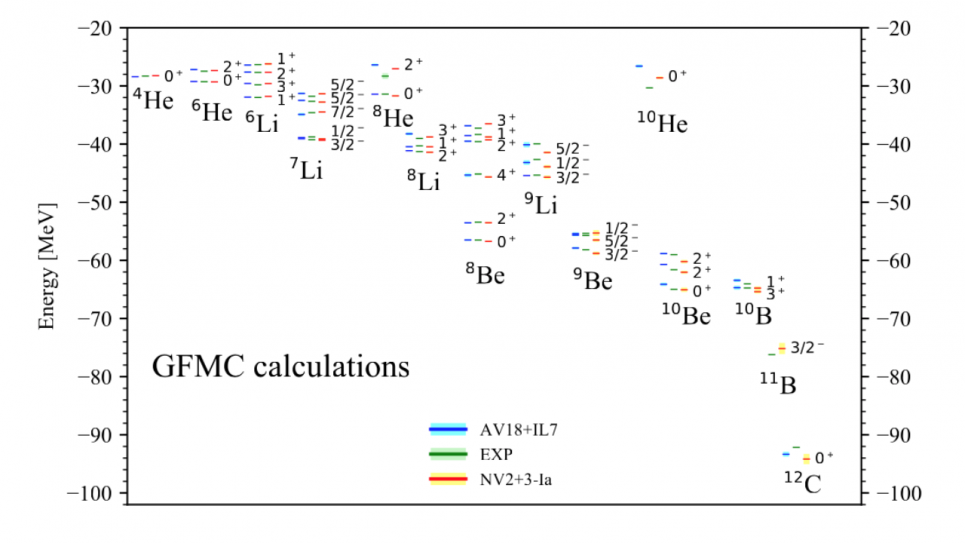
Low energy neutrino-nucleus interactions. Image: Saori Pastore, Washington University in St. Louis
Understanding the relevant dynamics and the role of short-range physics contributing to neutrinoless-double-beta decay processes requires study of decay mediated by the exchange of a neutrino. This decay can involve values of momentum transfer of the order of a few hundred MeV. To test the validity of the axial currents in this kinematical region, this work studies low-momentum responses and muon capture in light nuclei for which data are available.
Current and planned US experimental programs will benefit from better understanding of nuclear structure, reactions and properties emerging from nucleonic dynamics. This project aims to investigate, from the microscopic perspective, a kinematical region for which microscopic calculations are still lacking. The objective is to study electroweak reactions in light nuclei at low values of energy and momentum transfer. Using Quantum Monte Carlo (QMC) computational methods to solve the nuclear many-body problem, and phenomenological and chiral effective field theory (chiral EFT) to describe nuclear many-body interactions and currents, we will perform calculations of beta decay and neutrinoless-double-beta decay matrix elements, and low energy/momentum response functions induced by electrons and neutrinos, and muon-capture in light nuclei.
We anticipate delivering studies of these decay matrix elements in systems less than mass number A~13, and electroweak responses and muon-capture for nuclei between A = 4 and 12. Calculations are based on the most recent implementations of many-body chiral EFT potentials and associated electroweak currents. These many-body operators have been derived from a chiral EFT that uses pions, nucleons and deltas as fundamental degrees of freedom. The derivation of interactions and currents within the same EFT formulation ensures a consistent description of short- and intermediate-range dynamics in both many-body interaction and current operators.
One of the objectives is to validate the axial currents against available experimental data. To this end, we propose to perform a detailed analysis of beta-decay matrix elements in light nuclei, transitions for which data are abundant and known, in most cases, with great accuracy. Having constrained fully the many-body axial current operators by validating the model against available data for beta-decay, we will proceed to study neutrinoless-double-beta decay matrix elements in light nuclei.
Understanding the relevant dynamics and the role of short-range physics contributing to neutrinoless-double-beta decay processes requires study of decay mediated by the exchange of a neutrino. This decay can involve values of momentum transfer of the order of a few hundred MeV. To test the validity of the axial currents in this kinematical region we propose to study low-momentum responses and muon capture in light nuclei for which data are available.